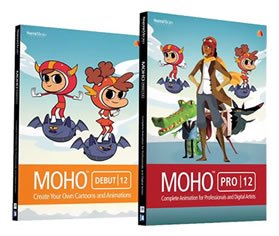

RE: question 1., do you mean turning, like from front to side view? This is typically done using Smartbones to drive two or three key positions. (This is pretty advanced though.stick to something simpler first.) If you're really clever, you can even rotate 180 degrees by having it transition through multiple key poses.īasically, you want to design your character with enough points so you can 'morph' or blend one view pose to another view pose, and animate the shapes and position of shapes to hit the key poses you want (front to side view, for example.) Then you set up a Smartbone that covers the range of blending between the key poses-once this is set up, can switch from front to side and back again by simply animating the Smartbone. If you've never done any type of shape morphing/blending before (even in drawing programs like Illustrator), it may take a bit of practice to understand. Get the technique down using simple shapes with minimal bones before attempting it on a fully rigged character. Moho is an excellent alternative to working with characters in Adobe After Effects, as everything is under one native engine, with a comprehensive animation concentric keyframes and. Now, a new release, Moho 13 brings new bitmap drawing tools along with the ability to rig and animate bitmap graphics with a traditional frame by frame style complete with onion skinning. If you dive in directly with a complex character, you'll probably become frustrated trying to understand how any problems are occurring.Īlso, be sure to study the rigged characters that come with the program. It’s been a while since we’ve seen any major updates to Moho, (formerly Anime Studio) the 2D character animation system.

I learned a lot of what I know by reverse engineering the work others have already done and applying the techniques to my own characters.Īctually, it's not necessarily a less advanced method-what's being described are just different methods and they can be used in different situations to produce similar or very different results by choice. The rig/character switching method is really not so different from what I do in Harmony at my work place. (I mainly use this approach because Harmony has no equivalent of Smartbones.) The trick for getting smooth transitions in rig-switching is to design your character so you can shift internal elements to create 'in-betweens' before you make the switch. For example, before making the switch between front to side for the head, shift the facial features in the direction you wish to have the character 'turn'. It has an intuitive UI and detailed tips to help kids master it faster. The best part about it is that you can use this free drawing software to create digital animation.

I may do an 'in-between' frame from there to complete the side transition.ĭepending on the animation, I might do two different frames for smoothness or if it's not critical, just one 'in-between' and hold the pose for 2 frames then I switch to the side rig. Verdict: This is an open-source child animation software, using which you can make 2D animations.


 0 kommentar(er)
0 kommentar(er)
